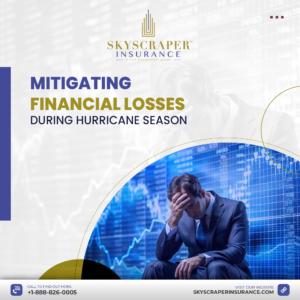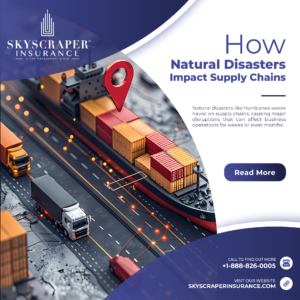As hurricane season approaches, businesses must take proactive steps to safeguard against financial losses. At Skyscraper Insurance, we understand the unique challenges companies face in times of disaster, and we’re committed to helping our clients navigate them successfully. Here’s how your business can mitigate financial risks with the right strategies and support. 1. Diversifying Income Streams for Resilience A diversified revenue model is crucial to withstanding the disruptions caused by hurricanes. Skyscraper Insurance works with businesses to evaluate new opportunities—whether it’s launching an online platform, expanding services, or entering new markets. This ensures that if one revenue stream is impacted, others can sustain the business. 2. Comprehensive Insurance Coverage The first line of defense is making sure your insurance policies are up to date and cover potential hurricane-related damages. Skyscraper Insurance specializes in providing tailored insurance solutions, including business interruption coverage, property damage, and flood insurance, to protect our clients against catastrophic financial losses. 3. Creating a Contingency Plan with Experts In partnership with Skyscraper Insurance, businesses can develop disaster contingency plans that ensure operations continue smoothly, even in the face of supply chain delays or power outages. We help you establish backup solutions, such as alternate suppliers or inventory management systems, minimizing financial fallout. 4. Maintaining a Recovery Fund Skyscraper Insurance advises its clients to maintain a recovery fund, ensuring fast access to resources for repairs, inventory restocking, and other unforeseen costs. This proactive approach enables businesses to get back on their feet quickly without waiting for loans or insurance claims to process. 5. Leveraging Government Aid and Local Resources In the aftermath of a hurricane, government aid can be crucial for businesses. We assist our clients in navigating grants, low-interest loans, and tax breaks available through local and federal disaster relief programs, ensuring that financial recovery is swift. 6. Risk Management Strategies At Skyscraper Insurance, we provide businesses with customized risk management strategies designed to reduce vulnerabilities and protect financial stability. From evaluating potential hazards to implementing risk-transfer solutions, we help you mitigate loss before a disaster strikes. 7. Ensuring Proper Documentation for Claims Keeping detailed financial records is essential for filing accurate and timely insurance claims. We help clients organize and maintain critical documents that streamline the claims process, ensuring a quicker recovery period. Skyscraper Insurance: Your Partner in Resilience While hurricanes can be unpredictable, your business doesn’t have to face them alone. At Skyscraper Insurance, our commitment goes beyond coverage; we provide expert guidance and comprehensive risk management services that empower businesses to stay strong and resilient during hurricane season.




